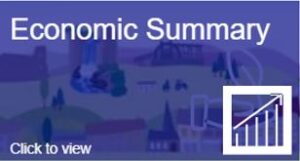 |
 |
 |
|---|
Average Household Income
The following is based upon official estimates of household income for local areas. The small area income estimates are the official estimates of annual household income at the Middle layer Super Output Area (MSOA) level in England and Wales for the financial year ending (FYE) 2020 and were published in october 2023.
They are designated National Statistics, which are calculated using a model-based method to produce four estimates of income. The estimates are produced using a combination of survey data from the Family Resources Survey and previously published data from the 2011 Census and a number of administrative data sources.
The four different measures of income are and descriptions of what they cover is in the ‘Notes’ section at the bottom of this page:
- gross (total) annual household income (un-equivalised)
- disposable (net) annual household income (un-equivalised)
- disposable (net) annual household income (equivalised) before housing costs
- disposable (net) annual household income (equivalised) after housing costs
An other related data of interest can be found in the Deprivation and Poverty section.
Key Messages
- Total Annual Household Income: 21 of the 66 MSOAs in County Durham were estimated to have some of the lowest total household incomes nationally – in the top 10% lowest. This increases to 52 MSOAs in the top 30% lowest nationally,
- Net Annual Household Income: 27 of the 66 MSOAs in County Durham were estimated to have some of the lowest net household incomes nationally – in the top 10% lowest. This increases to 55 MSOAs in the top 30% lowest nationally,
- Net Annual Household Income Before housing Costs: 17 of the 66 MSOAs in County Durham were estimated to have some of the lowest net household incomes (before housing costs) nationally – in the top 10% lowest. This increases to 53 MSOAs in the top 30% lowest nationally,
- Net Annual Household Income After housing Costs: 11 of the 66 MSOAs in County Durham were estimated to have some of the lowest net household incomes (after housing costs) nationally – in the top 10% lowest. This increases to 44 MSOAs in the top 30% lowest nationally,
The map in the following section shows this distribution across County Durham (and the wider North East) by MSOA. The indicator mapped is the decile of the ‘Net Household Income After Housing Costs’.
Interactive Map
Small Area Household Income Estimates (Direct Link)
The documents we publish on this page are either legally required to be made available for inspection, for information and analysis purposes or may have been supplied by the public and so in some cases may not be fully accessible. If, for any reason, you cannot access the documents and need an alternative format, please email ina@durham.gov.uk.
Notes
These reference tables contain statistics of model-based small area income estimates for financial year ending 2018, following the previous estimates of income for financial year ending 2016. The small area income estimates are available for middle layer super output Areas (MSOAs) in England and Wales, and aim to fulfil users’ requirements for more granular income information on a consistent geography. Estimates of average income are produced for financial year ending 2018, on middle super output areas for the following four income types:
- Total annual household income
- Net annual household income
- Net annual household income before housing costs (equivalised)
- Net annual household income after housing costs (equivalised)
Total annual household income is the sum of the gross income of every member of the household plus any income from benefits such as Working Families Tax Credit.
Net annual household income is the sum of the net income of every member of the household. It is calculated using the same components as total income, but income is net of:
- income tax payments;
- national insurance contributions;
- domestic rates/council tax;
- contributions to occupational pension schemes;
- all maintenance and child support payments, which are deducted from the income of the person making the payments; and
- parental contribution to students living away from home.
Net annual household income before housing costs (equivalised) is composed of the same elements as net household weekly income but is subject to the OECD’s equivalisation scale.
Net annual household income after housing costs (equivalised) is composed of the same elements of net household weekly income but is subject to the following deductions prior to the OECD’s equivalisation scale being applied:
- rent (gross of housing benefit);
- water rates, community water charges and council water charges;
- mortgage interest payments (net of any tax relief);
- structural insurance premiums (for owner occupiers); and
- ground rent and service charges.
Links:
The latest data can be accessed on the Office for National Statistics website: Income Estimates for Small areas.
For detailed information on aspects of the quality and methodology behind these statistics, see the Technical Report:
